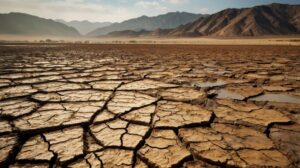Drinking Water Contamination: Disease Prevention

In today’s fast-paced world, it’s essential to stay informed about potential health risks and preventive measures. One such concern that affects us all is drinking water contamination and its impact on disease prevention. Join us as we delve into this important topic and explore ways to safeguard our health through informed choices and proactive measures. Stay tuned for expert guidance and actionable steps to promote a healthier lifestyle.
Water is essential for life, but unfortunately, it is not always safe to drink. Contaminated water can have serious health consequences, ranging from minor illnesses to life-threatening diseases. Understanding the link between water contamination and disease is crucial for ensuring the safety of our drinking water. This comprehensive guide will provide you with the necessary information to protect yourself and your loved ones from the harmful effects of contaminated water.
A Comprehensive Guide for Safe Drinking Water
This article will delve into the various types of water contaminants and their potential health impacts. It is based on information from reputable sources such as the Centers for Disease Control and Prevention (CDC) and the US Environmental Protection Agency (EPA), providing a well-rounded perspective on the topic. By the end of this article, you will have a thorough understanding of the sources, effects, and prevention of water contamination, and be equipped with the knowledge to ensure the safety of your drinking water.
Sources and Organizations Referenced: CDC, EPA
Understanding Water Contaminants and Their Sources
Water contamination occurs when foreign substances enter water sources, making it unsafe for consumption. These impurities can be classified into three types: chemical, biological, and physical contaminants.
Chemical contaminants include substances such as pesticides, heavy metals, and industrial chemicals, which can enter water sources through run-off from agricultural or industrial activities, or even through aging water infrastructure.
Biological contaminants are microorganisms, like bacteria and viruses, that can cause waterborne diseases. They can enter water sources through sewage leaks or animal waste.
Physical contaminants include particles or sediments that can make water cloudy or discolored. These can come from natural sources like soil erosion or human activities like construction.
The most common sources of water contamination are industrial, agricultural, and natural sources. Industrial activities such as mining and manufacturing can release toxic chemicals into water sources. Agricultural practices like using pesticides and fertilizers can also lead to contamination through run-off. Natural sources, such as groundwater contamination from natural minerals, can also be a cause for concern.
According to the World Health Organization, about 2 billion people globally do not have access to safe drinking water due to contamination. This highlights the widespread issue and the need for understanding and prevention.
Health Effects of Water Contamination
Water contamination can have serious health effects, depending on the type and level of contaminants present in the water. Chemical contaminants, such as lead and arsenic, can cause various health issues ranging from skin irritation to organ damage. Biological contaminants, such as bacteria and viruses, can lead to illnesses like diarrhea and gastroenteritis. Physical contaminants, such as sediment and debris, can cause choking and digestive problems.
The health impacts of water contamination can be especially severe for vulnerable populations, such as young children, pregnant women, and those with weakened immune systems. Ingesting contaminated water can lead to immediate health effects, but also long-term consequences like cancer and neurological disorders.
It is important to be aware of the potential health impacts of water contamination and take steps to prevent exposure. This includes understanding the sources of contamination and implementing proper treatment methods for your water source. By prioritizing prevention, individuals can protect their health and well-being.
Prevention and Treatment of Water Contamination
Role of Government Agencies
Government agencies, such as the Centers for Disease Control and Prevention (CDC) and the US Environmental Protection Agency (EPA), play a crucial role in regulating and monitoring water quality. They set standards and guidelines for safe drinking water and work to ensure that these standards are met by public water systems.
Methods Used
There are various methods used to prevent and treat water contamination. These include filtration, disinfection, and chemical treatment. Filtration involves passing water through a barrier to remove impurities. Disinfection involves using chemicals or ultraviolet light to kill harmful bacteria and viruses. Chemical treatment is used to neutralize or remove specific contaminants.
Challenges and Limitations
Despite efforts to prevent and treat water contamination, there are still challenges and limitations. For example, some contaminants may be difficult to remove or treat, and the cost of implementing these methods can also be a barrier for some communities.
Ensuring Safe Drinking Water
Ensuring safe drinking water is a crucial responsibility that falls on both individuals and government agencies. While organizations such as the CDC and EPA play a vital role in regulating and monitoring water quality, individuals also have a part to play in ensuring the safety of their drinking water.
To ensure safe drinking water, individuals can take simple steps such as regularly testing and treating their water at home. This includes using filtration systems or adding disinfectants like chlorine to kill harmful contaminants. It is also important to regularly maintain and monitor water sources to prevent contamination.
By taking these measures, individuals can have peace of mind knowing that their drinking water is safe for consumption. Additionally, it is essential to stay updated on any advisories or warnings from local authorities regarding water quality. Together, these efforts can help prevent the negative health impacts of water contamination.
Successful Efforts in Preventing Water Contamination
There have been numerous successful efforts in addressing water contamination and improving the safety of drinking water. One notable example is the country of Denmark, which has a comprehensive water management system in place that has effectively reduced the levels of contaminants in their water sources.
Initiatives such as strict regulations on industrial and agricultural practices, along with advanced water treatment methods, have been crucial in preventing contamination. Additionally, community efforts to reduce pollution and protect water sources have played a significant role in maintaining clean and safe drinking water.
In the United States, the city of New York has taken steps to protect their water supply through the implementation of a watershed protection program. This program involves partnerships with local farmers and businesses to reduce pollution and maintain the quality of the water.
These successful efforts highlight the importance of collaboration and proactive measures in preventing water contamination. By learning from these examples, it is possible for other communities to implement similar strategies and effectively protect their drinking water.
Conclusion
In conclusion, understanding the link between water contamination and disease is crucial for ensuring safe and healthy drinking water. This comprehensive guide has provided a thorough overview of the sources, types, and health effects of water contaminants. By prioritizing prevention and treatment measures, such as filtration and disinfection, we can reduce the risk of waterborne illnesses.
However, the responsibility also lies with individuals to regularly test and maintain their water sources. By taking action at the individual level, we can contribute to a larger effort in preventing water contamination. We have seen successful examples of communities and countries addressing this issue, emphasizing the need for collective action.
The importance of safe drinking water cannot be overstated, and it is our collective responsibility to protect this vital resource. We hope this article has equipped you with the knowledge and tools to ensure the safety of your drinking water. For more information on this topic, please refer to the trusted sources provided in the references section. Let’s work together towards a healthier and cleaner water supply for all.
https://fiscalfitnessflow.com/index.php/2024/02/12/the-importance-of-hydration-on-overall-health/
https://www.cdc.gov/
References
Centers for Disease Control and Prevention – The leading national public health institute in the United States responsible for protecting and promoting public health. The CDC provides valuable information and resources on water contamination and its health effects.
US Environmental Protection Agency – The federal agency that oversees the protection of human health and the environment. The EPA sets standards and regulations for safe drinking water and regularly monitors water quality.
World Health Organization – A global organization that provides guidance and sets standards for public health issues, including water quality. Their website contains a wealth of information on water contamination and prevention efforts around the world.
Scientific journals – These peer-reviewed publications provide in-depth research and studies on water contamination and its health impacts. Examples include the Journal of Water and Health and Environmental Science & Technology.
Local health departments – These agencies play a crucial role in monitoring water quality at a community level and providing resources for testing and treatment. Check with your local health department for specific guidelines and information on water contamination in your area.
FAQ’s
Q: What is the importance of ensuring the quality of drinking water?
A: Ensuring the quality of drinking water is crucial for maintaining good health as consuming contaminated water can lead to various waterborne illnesses.
Q: What are waterborne illnesses?
A: Waterborne illnesses are diseases caused by the consumption of contaminated water, which contains pathogens such as bacteria, viruses, and parasites.
Q: How can drinking water become contaminated?
A: Drinking water can become contaminated through various sources such as inadequate water treatment, contamination from sewage or agricultural runoff, or a malfunctioning water system.
Q: What are the common sources of drinking water contamination?
A: Common sources of drinking water contamination include private wells, public drinking water systems, and water storage containers.
Q: How can we prevent waterborne illnesses?
A: Waterborne illnesses can be prevented by ensuring the safety of the drinking water source, practicing proper sanitation and hygiene, using household water treatment methods, and following any water advisories or boil water notices.







